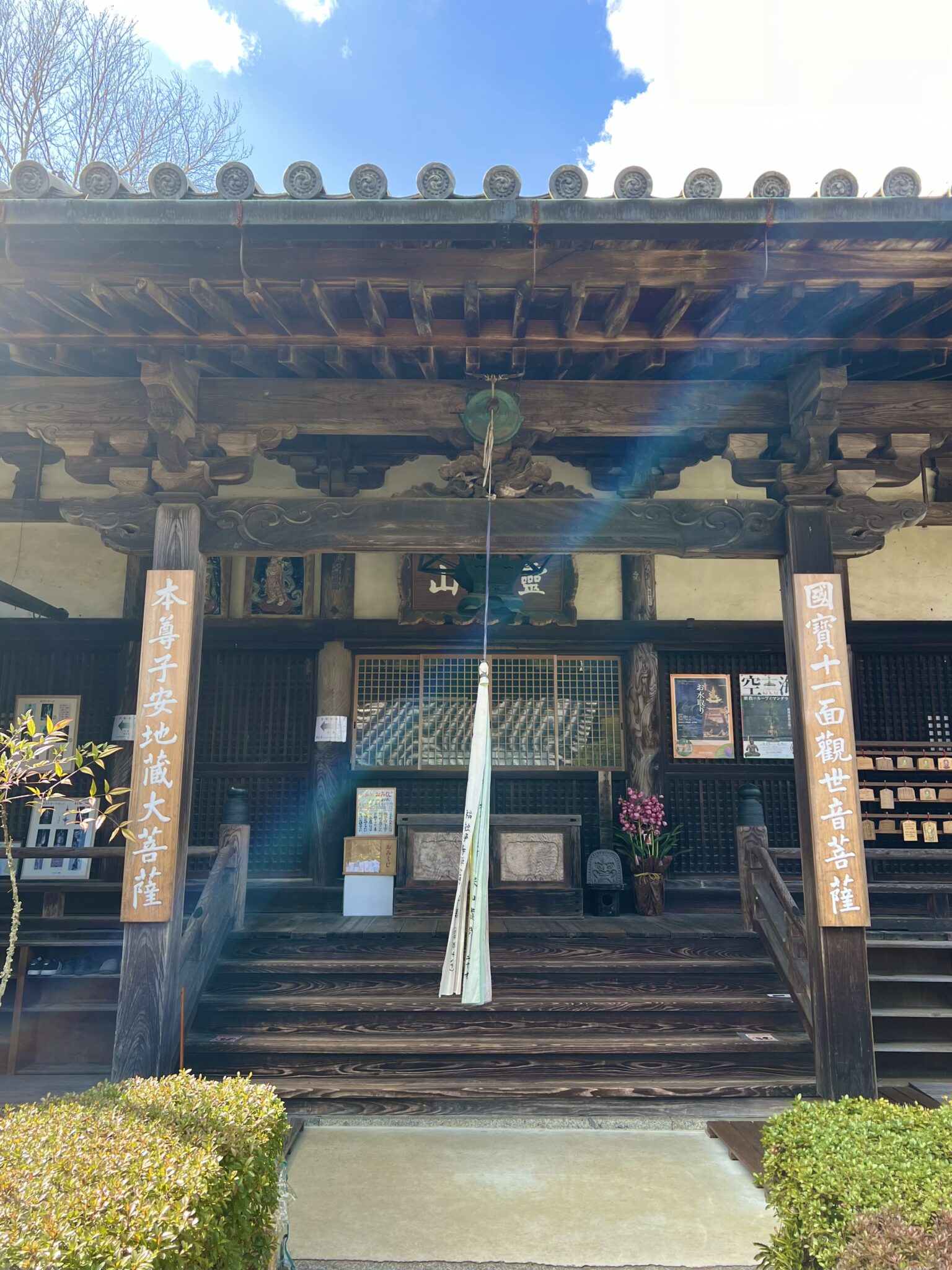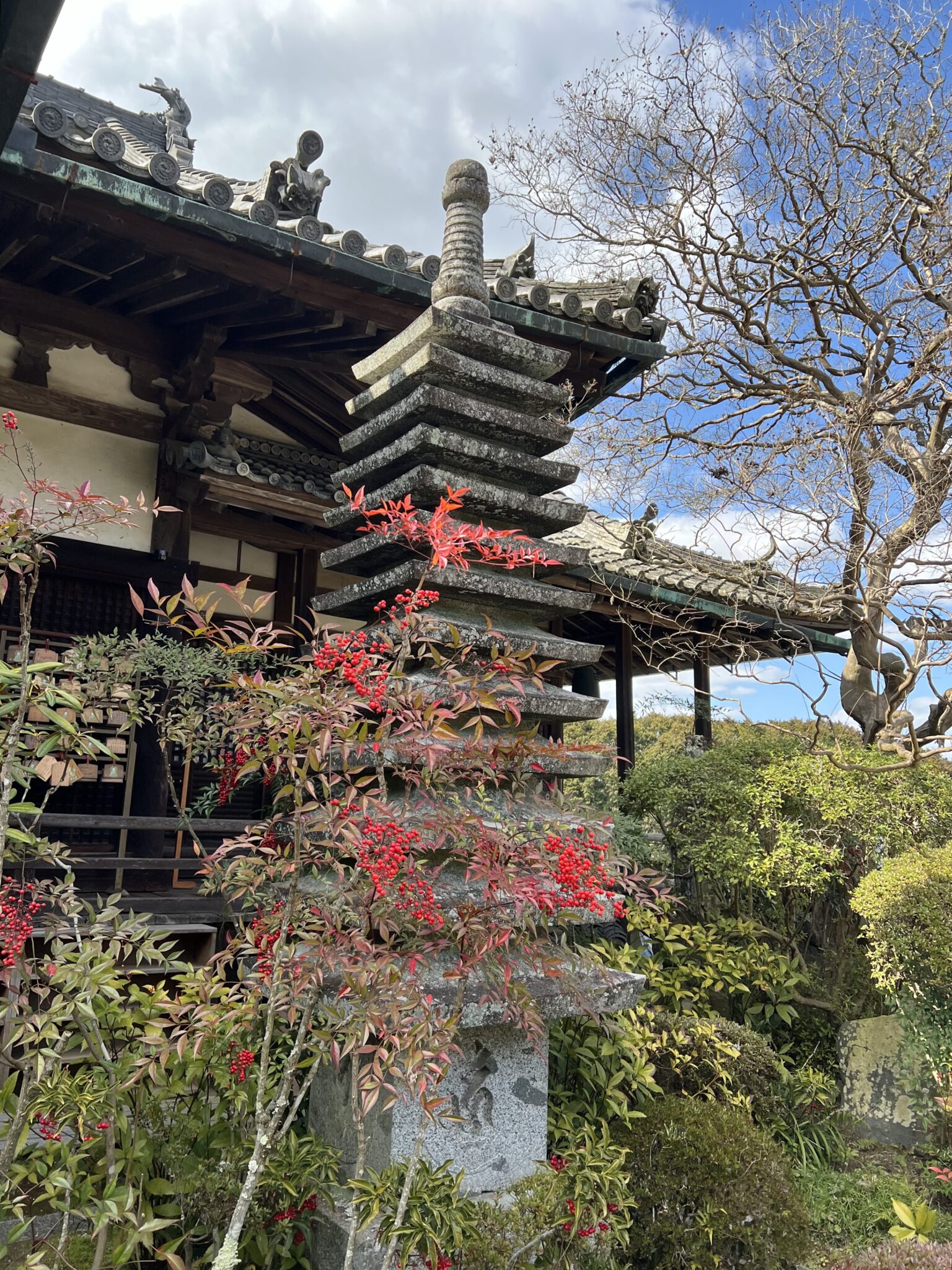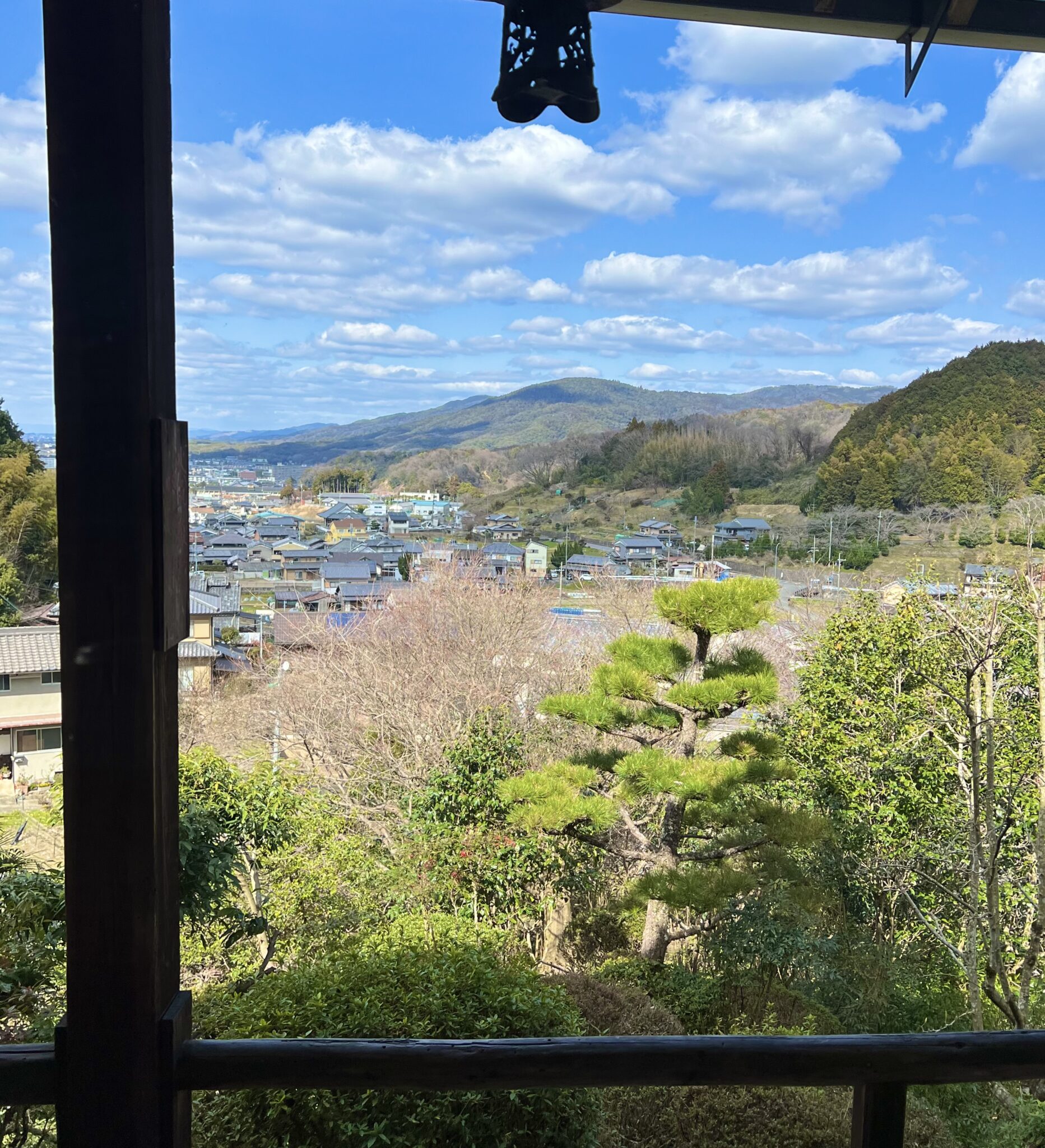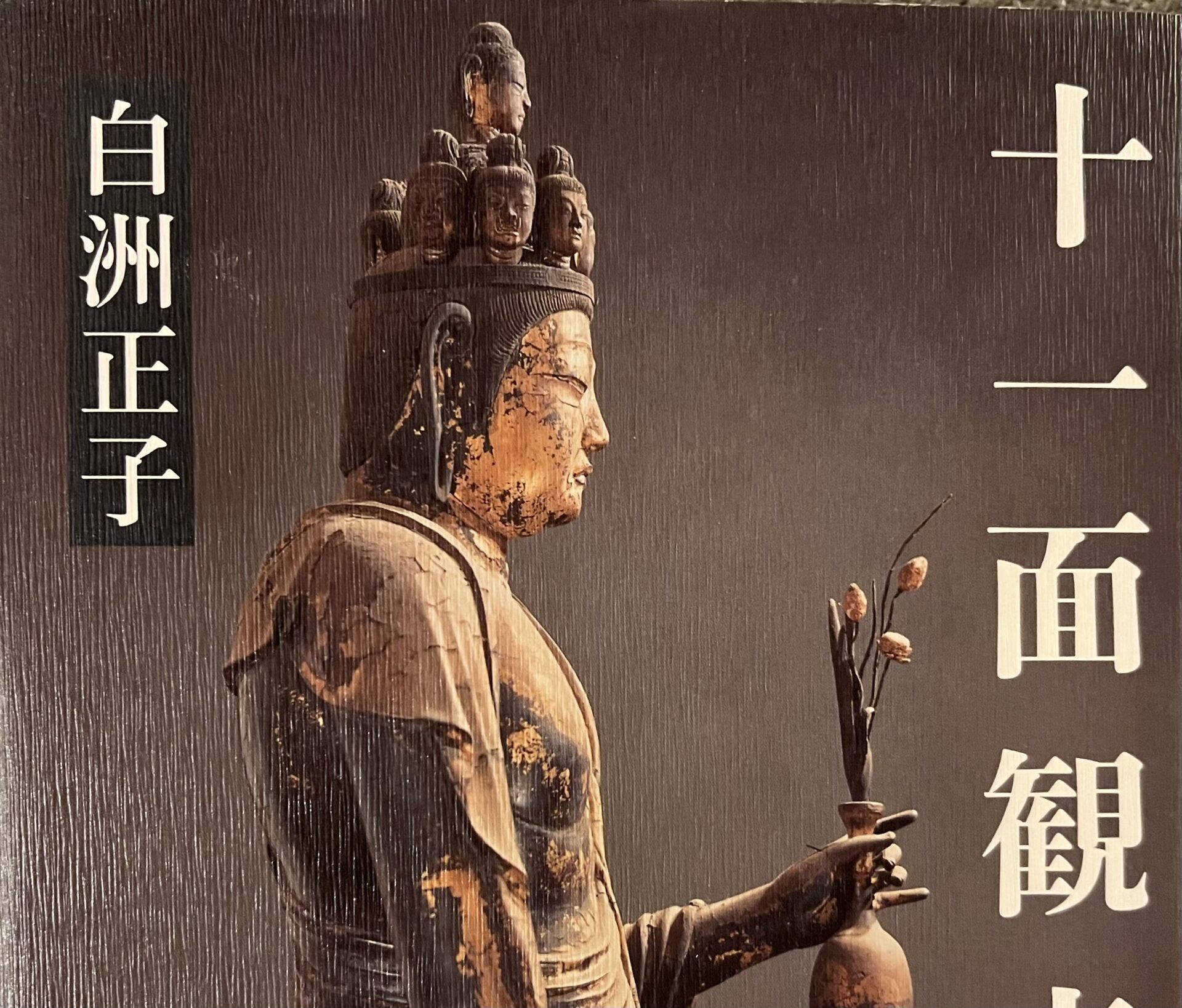I visited Shorinji Temple in March. That day, I had planned to descend from Tanzan Shrine in Tonomine, have lunch at Ichijoan, a delicious soba restaurant in Uda, and then head to Omiwa Shrine. However, as I was driving along the road, I noticed a sign for Shorinji Temple. Feeling a sudden urge to see the beautiful Eleven-faced Kannon once again, I turned left instead of continuing straight to Omiwa Shrine, and made my way to the temple nestled halfway up a small hill. Although it was a Sunday, there were only a few other visitors, allowing us to take our time and appreciate the temple’s serene atmosphere.

History
According to tradition, Shorinji Temple was established by the monk Jōe, the eldest son of Fujiwara no Kamatari, as a branch temple of Myorakuji (now Tanzan Shrine), which enshrines Kamatari. Although much of its history remains unclear, the temple seems to have had deep ties with the land of Miwa and Omiwa Shrine. It is well known that after the Meiji-era policy of separating Buddhism and Shintoism, the Eleven-faced Kannon statue, now a National Treasure, was moved to Shorinji Temple from Omiwaraji Temple, which had been the temple associated with Omiwa Shrine.
Temple Ground
From the parking lot, as you climb the stone steps, you’ll find the gate of Shorinji Temple on your right. Although it is a very small temple, the well-maintained shrubs and the thirteen-story stone pagoda in the front garden create a homely atmosphere that reflects the temple’s place as a beloved part of the local community.

Main Hall
From the large opening in the main hall, located halfway up the mountain, you can enjoy a panoramic view of Mount Miwa, Hashihaka Kofun, and the serene landscape of Sakurai, which has remained unchanged since ancient times. One of the wonderful things about Nara is that you can still see the same scenery that people in the past once saw. The blue sky dotted with clouds and the beautiful spring light add to the charm. Although the temple is small, the expansive view outside might be one reason why the hall feels so spacious when you step inside.

Principal Image
The principal deity of Shorinji Temple is an adorably plump Jizo statue made from a large stone. Known as Koyasu Enmei Jizo, this deity is believed to grant prayers for safe childbirth and fertility. The statue’s gentle expression reflects the blessings it bestows.
National Treasure Eleven-faced Kannon
The primary reason most people visit Shorinji Temple is to pay homage to the renowned Eleven-faced Kannon, a National Treasure. The Kannon statue is enshrined in the Kannon Hall, which is accessed by climbing the semi-outdoor staircase on the left side of the main hall. I have visited the temple about four times over the past 30 years, and each time, the display environment of the Kannon has changed. In 2020, the statue underwent a rededication ceremony and restoration of its halo, and I was surprised to see that the Kannon Hall had been transformed into a very impressive and modern space.
The Kannon, housed in a glass case, is a stunning example of Tempyo-era Buddhist sculpture, with a slender, tall figure that exudes overwhelming dignity, grace, and delicacy. The statue dates back to the mid-8th century during the Nara period and is said to have been commissioned by Prince Chinu, the grandson of Emperor Tenmu. The current display allows visitors to walk all the way around the statue, enjoying its beauty from 360 degrees. Despite being a wood and dry lacquer sculpture from the Nara period, much of the gold leaf has been wonderfully preserved, giving the statue an awe-inspiring divine presence.
The statue appears on the cover of Masako Shirasu’s book Eleven-faced Kannon Pilgrimage, where she describes it in the opening as follows: “I can never forget the image of the Kannon emerging in the faint light that streamed in. It appeared, shimmering, as if it had just been born into this world… I was simply stunned, mesmerized by the sheer beauty of such a thing existing in this world.”

When Masako Shirasu visited here in the early Showa period, Shorinji Temple was scarcely known, and it seems that this Kannon statue was housed in a very modest hall.
After admiring the statue up close, I took a seat on a sofa positioned on a lower level and lingered, immersing myself in its beauty for as long as I could.
The remaining fragments of this Kannon statue’s elegant halo are entrusted to the Nara National Museum. During the 2020 rededication ceremony, the halo was recreated using Nishijin weaving, as reproducing it in wood was deemed too costly. The next time I visit the Nara National Museum, I definitely plan to go see the fragments of the original halo.
Sovenirs/ Offerings
There are many postcards and other items featuring images of the Eleven-faced Kannon statue, but what caught my eye was an Akahada-yaki tea bowl. It was a small, practical matcha bowl adorned with charming drawings of birds and flowers. I’m thinking of buying it the next time I visit.
Access
There is no public transportation available. It is located about 2.6 kilometers south of JR Sakurai Station.

